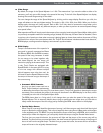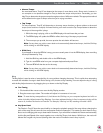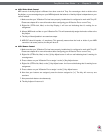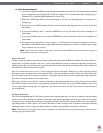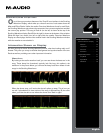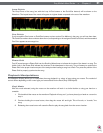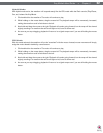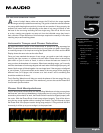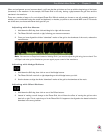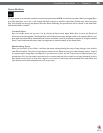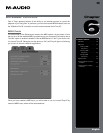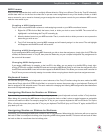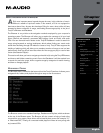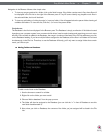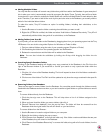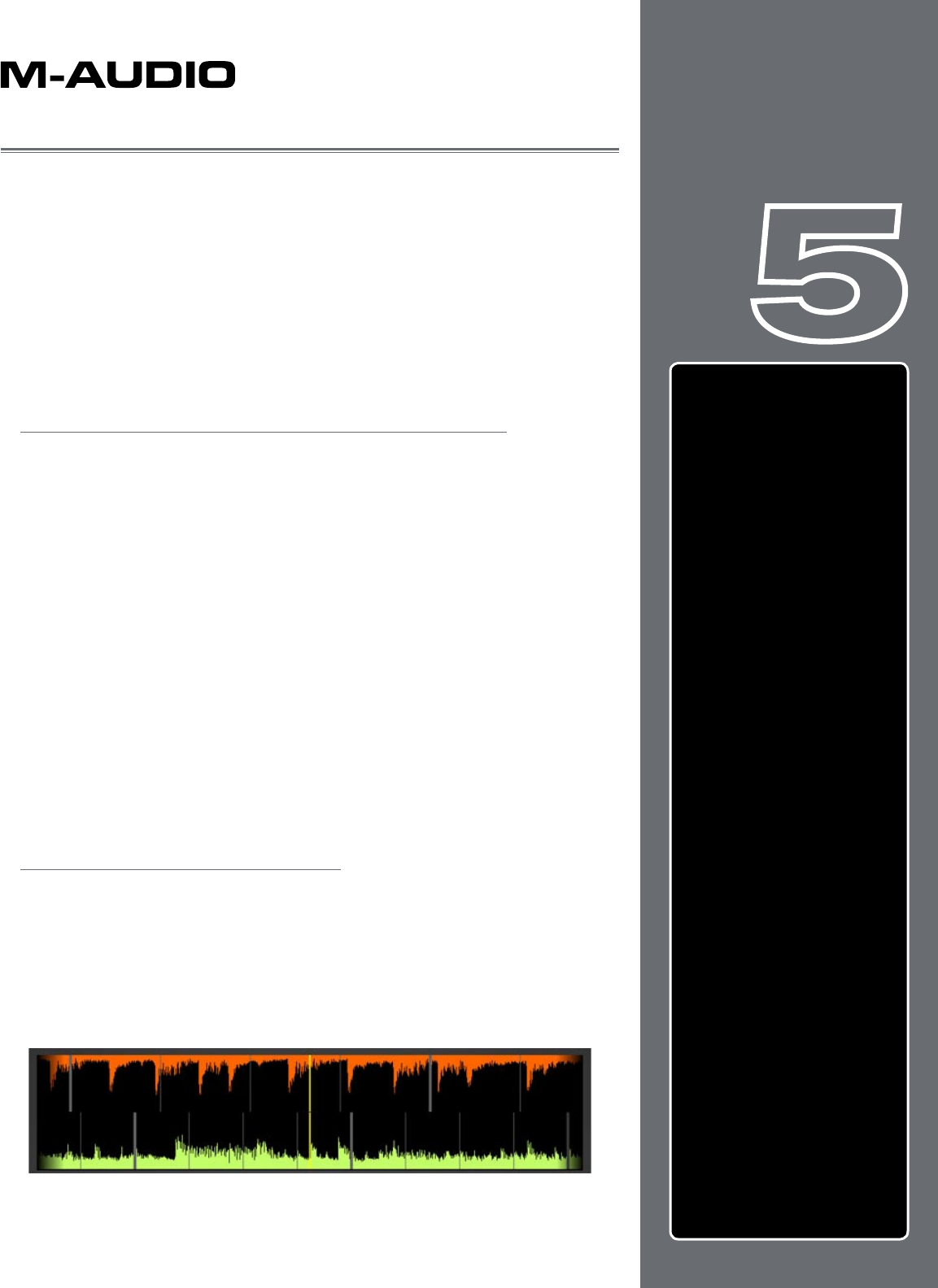
23
Chapter
1
English
23
English
Chapter
5
SYNCHRONIZATION
A
t most of today’s dance clubs and events, the DJ will mix the songs together
using a technique called beat-matching. The goal is to fade the volumes between
two songs while keeping them perfectly in beat with one another. If done properly, the
audience will never have to stop dancing as the beat of one song will blend in with
the beat of the new song—sounding like one single song. DJs will do this for hours
at a time, creating one gigantic non-stop mix from the individual songs they have in
their collection. Proper execution of this technique requires the mastery of two tasks:
matching tempo and matching phase.
Automatic Tempo and Phase Detection
As mentioned before, tempo is the measurement of speed of a song expressed as
BPM. Torq automatically determines the tempo of a song when you load it onto a Deck,
so matching tempos is as simple as moving the Speed slider on a Deck until the BPM
Display shows the same value as the other Deck.
Once you have matched the tempos of two songs, you need to start both songs at
precisely the right moment, or in-phase with each other. Phase refers to the starting
point within a cycle. In terms of music, it refers to where the beats are located in a
song, such as the downbeat of a measure. When beat-matching songs, you’ll normally
want the downbeats of both songs aligned with each other. When aligned properly, the
beats of both songs will blend together into one larger beat. If the songs are misaligned
or out-of-phase, it will sound terrible as the beats of the two songs will be playing at
different times (in DJ jargon, this is known as a “train wreck” and is something that
should be avoided at all times).
Torq’s Scrolling Waveforms will help you match the phases of the two songs. Not only
can you visually align the transients in the waveforms, you can also use the Phase Grid
for automatic synchronization.
Phase Grid Manipulations
Torq LE also places a Phase Grid over the Scrolling Waveforms to help you see where
the beats are, even during a breakdown or rhythmless intro of a song. In order for Torq’s
automatic synchronization to work, the Phase Grid will need to be aligned properly with
the music. With the Phase Grids of both songs aligned properly, Torq will be able to
sync the two songs together without creating train wrecks. Torq will attempt to place
the Phase Grid in the proper location during song analysis. If Torq positions the Grid
incorrectly, it will be up to you to re-align it to the proper beat.
SYNCHRONIZATION . . . . . . . . 23
Automatic Tempo and Phase
Detection
. . . . . . . . . . . . . 23
Phase Grid Manipulations
. . . . . 23
Adjusting with the Mouse
. . . 24
Adjusting with Nudge
Buttons
. . . . . . . . . . . . 24
Adjusting with Offset
Buttons
. . . . . . . . . . . . 24
Sync Button . . . . . . . . . . . . .
25
Locked Sync
. . . . . . . . . . 25
Momentary Sync . . . . . . . .
25



